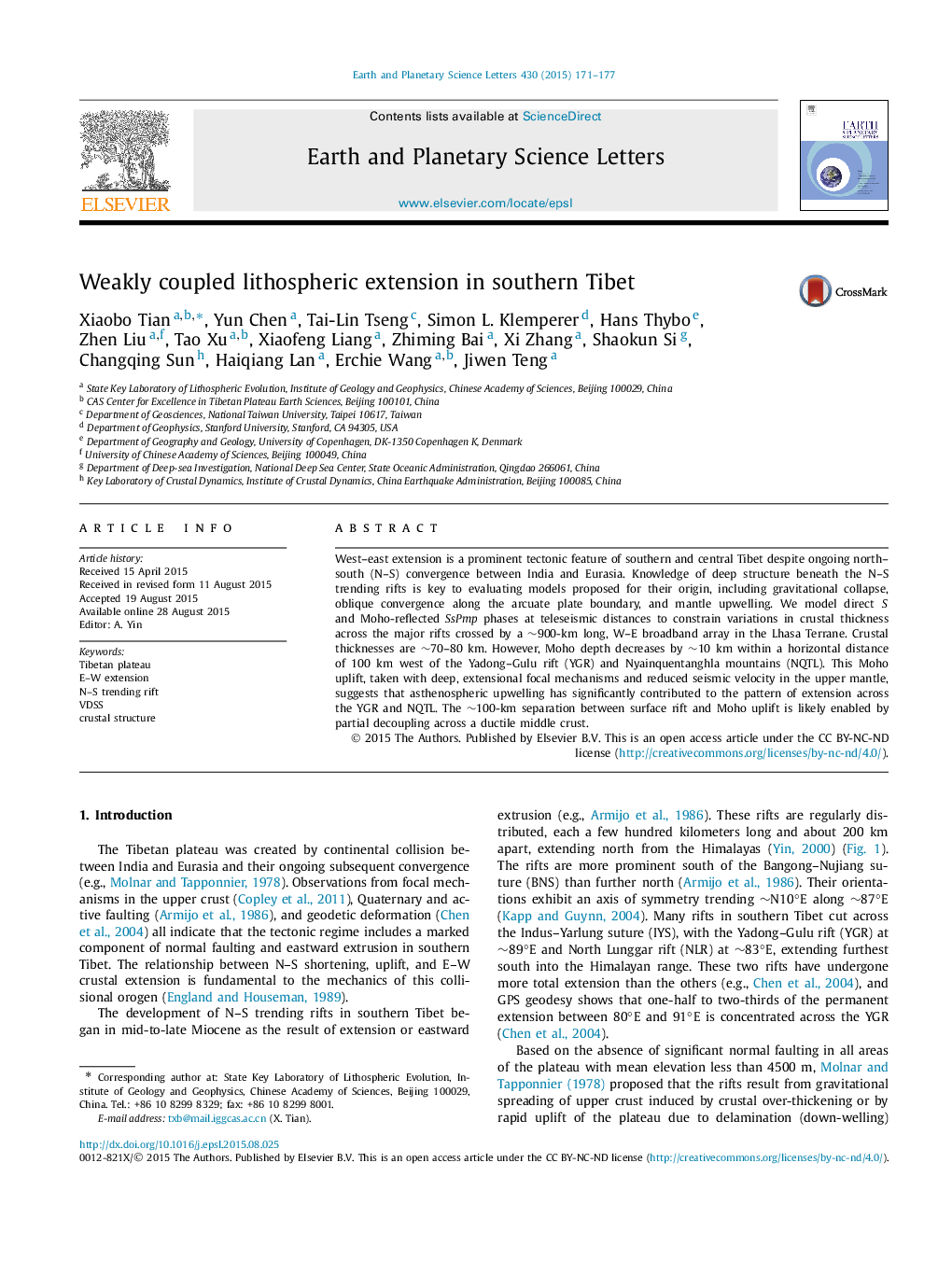| Article ID | Journal | Published Year | Pages | File Type |
|---|---|---|---|---|
| 6427923 | Earth and Planetary Science Letters | 2015 | 7 Pages |
â¢Moho reflections are observed on a 900-km, 31°N seismic array in Lhasa block, Tibet.â¢Data reveal variations in crustal thickness across the major N-S trending rifts.â¢Moho depth increases from 70 to 80 km W-to-E within 100 km west of Yadong-Gulu rift.â¢Lateral separation of surface rift and Moho uplift is enabled by partial decoupling.â¢Asthenospheric upwelling above slab rollback or slab tearing contributes to rifting.
West-east extension is a prominent tectonic feature of southern and central Tibet despite ongoing north-south (N-S) convergence between India and Eurasia. Knowledge of deep structure beneath the N-S trending rifts is key to evaluating models proposed for their origin, including gravitational collapse, oblique convergence along the arcuate plate boundary, and mantle upwelling. We model direct S and Moho-reflected SsPmp phases at teleseismic distances to constrain variations in crustal thickness across the major rifts crossed by a â¼900-km long, W-E broadband array in the Lhasa Terrane. Crustal thicknesses are â¼70-80 km. However, Moho depth decreases by â¼10 km within a horizontal distance of 100 km west of the Yadong-Gulu rift (YGR) and Nyainquentanghla mountains (NQTL). This Moho uplift, taken with deep, extensional focal mechanisms and reduced seismic velocity in the upper mantle, suggests that asthenospheric upwelling has significantly contributed to the pattern of extension across the YGR and NQTL. The â¼100-km separation between surface rift and Moho uplift is likely enabled by partial decoupling across a ductile middle crust.
Graphical abstractDownload high-res image (96KB)Download full-size image
